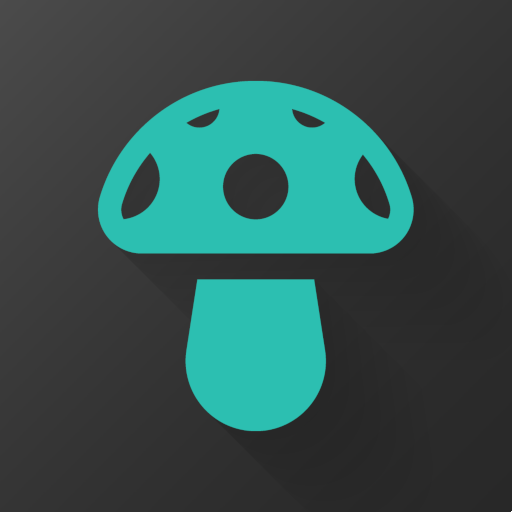ShroomID – Identify Wild Mushrooms with Confidence and Learn Mycology on the Go
Meet Your Field‑Ready Mushroom Hunting Companion
Foragers, nature lovers, and mycology students all share the same challenge: making accurate mushroom identifications quickly and safely. ShroomID is designed as a field‑ready companion that blends advanced image recognition with a comprehensive species database and a supportive community—so identification, learning, and safety travel with every hike. Whether exploring a local woodland or documenting fungi for a personal herbarium, ShroomID streamlines the process from photo to probable match while encouraging deeper learning about taxonomy and ecology.
Point, Shoot, Identify: AI-Powered Mushroom Recognition
The core of ShroomID is fast, intuitive identification:
-
Snap a clear photo in the field and get AI‑powered suggestions that closely match cap shape, gill attachment, pore structure, stipe features, and other visible traits.
-
Review ranked candidates with side‑by‑side images and distinguishing characteristics to verify the closest fit.
-
Save and label finds to build a personal logbook of observations, habitats, and seasons.
This instant guidance helps narrow possibilities quickly, so time in the woods stays focused on observation, not guesswork.
Precision Filters for Field Conditions
When photos alone aren’t enough, refine results with targeted filters:
-
Color, cap texture, cap margin, lamellae vs. pores, stipe ornamentation, veil and ring presence.
-
Spore‑bearing surface type (gills, pores, teeth), bruising and staining reactions, latex, and odor notes.
-
Habitat and substrate (conifer duff, hardwood logs, grassland, burnt ground), region, and season.
These structured filters mirror expert workflows, guiding users toward diagnostic traits that matter most for accurate IDs.
Learn the Science: A Built‑In Mycology Guide
ShroomID goes beyond “what is it?” to explain “why it’s that species”:
-
Detailed species profiles: scientific and common names, edibility and toxicity status, look‑alikes with distinguishing features, ecological roles (saprobic, mycorrhizal, parasitic), and typical range.
-
Morphological primers: cap and stipe anatomy, hymenophore types, spore prints, bruising chemistry, and field safety best practices.
-
Ecological context: tree associations, soil types, and successional patterns to anticipate where and when species fruit.
With clear, accessible explanations, users build lasting identification skills—not just quick answers.
Safety First: Edibility, Toxicity, and Look‑Alikes
Responsible foraging means respecting uncertainty:
-
Prominent edibility and toxicity warnings, including common dangerous look‑alikes and “do not eat” flags where confusion risk is high.
-
Plain‑language notes on preparation requirements (if applicable) and regional cautionary advice.
-
Emphasis on verification: cross‑check multiple traits, consult spore prints and habitat, and seek community confirmation before any culinary use.
ShroomID promotes a safety‑forward mindset—knowledge before nibble.
Community Identification and Peer Learning
When a specimen is tricky, tap into crowd wisdom:
-
Post clear photos (multiple angles), habitat details, and notes for community input.
-
Receive constructive feedback from enthusiasts and experienced identifiers, with pointers to key features to recheck.
-
Learn collaboratively by reviewing solved IDs, discussions, and field notes from diverse regions.
This cooperative layer accelerates learning while connecting foragers, hikers, and mycologists across ecosystems.
Organize Your Foraging Life
Turn casual finds into structured knowledge:
-
Personal collections: tag entries by location, habitat, associated trees, and season to see patterns over time.
-
Trip journals: group observations by hike with maps and timestamps for easy review.
-
Export options for field logs or sharing with local clubs and coursework.
With tidy organization, returning to a site in the right season gets easier—and more fruitful.
Tips for Accurate Mushroom IDs
-
Photograph essentials: cap top and underside, stipe base (including volva if present), overall habitat, and a cut section if safe to handle.
-
Note substrate: living tree species, deadwood type, soil vs. moss vs. leaf litter.
-
Check bruising: observe color changes over minutes after gentle pressure or a clean cut.
-
Use multiple traits: never rely on a single feature; confirm with cap, gills/pores, stipe, odor, and season.
-
When in doubt, don’t consume: treat the app as an educational guide and seek multiple confirmations.
Why ShroomID Stands Out
-
Fast AI suggestions plus expert‑style filters for precise, teachable IDs.
-
Rich species profiles covering morphology, ecology, edibility, and look‑alikes.
-
Community identification to resolve edge cases and accelerate learning.
-
Field‑friendly design for quick capture, logging, and offline‑minded note‑taking.
Final Thoughts: Explore, Learn, Forage Responsibly
ShroomID empowers both beginners and seasoned foragers to identify fungi more confidently while deepening understanding of mycology and forest ecology. With image recognition, scientific context, and a supportive community, it turns each find into a learning moment—and each hike into a richer exploration.
Download ShroomID, step into the woods, and start building a smarter, safer, and more connected mushroom hunting practice today. For questions or feedback, reach the team anytime at support@shroom.id.
The game/app ShroomID - Identify Mushrooms! has been tested and does not contain any viruses!
Updated: 22-08-2025, 22:20 / Price: Free USD / Author: admin
